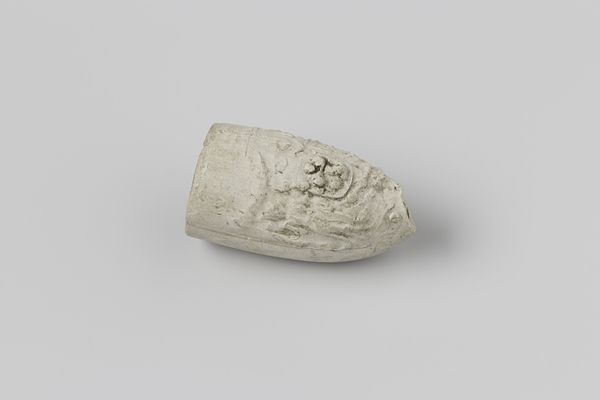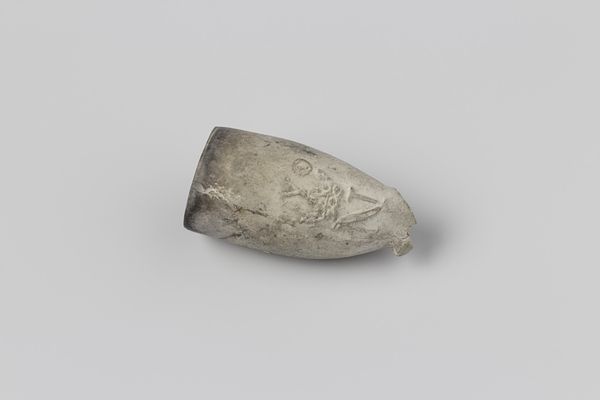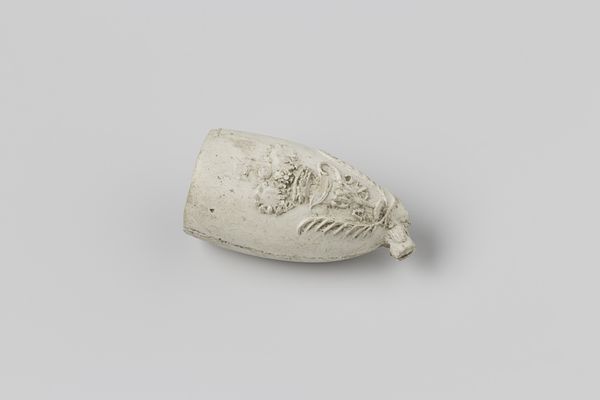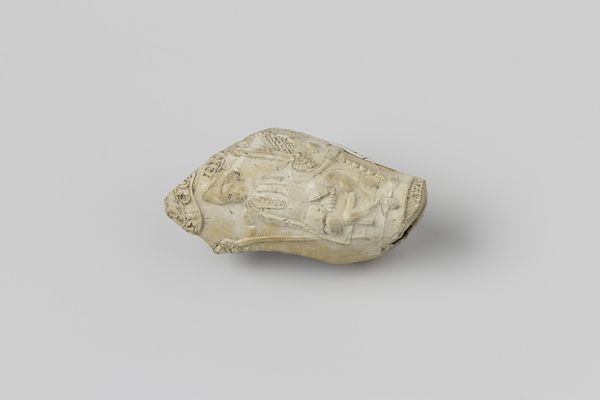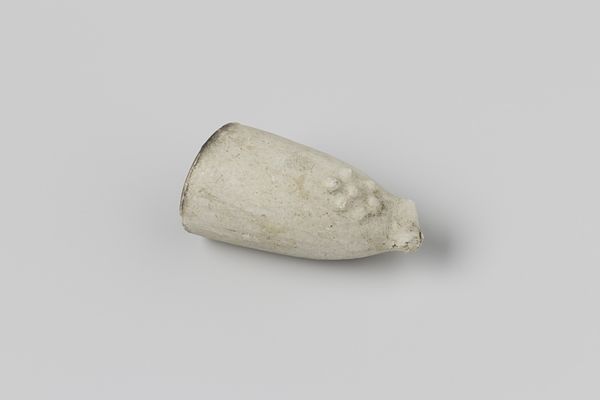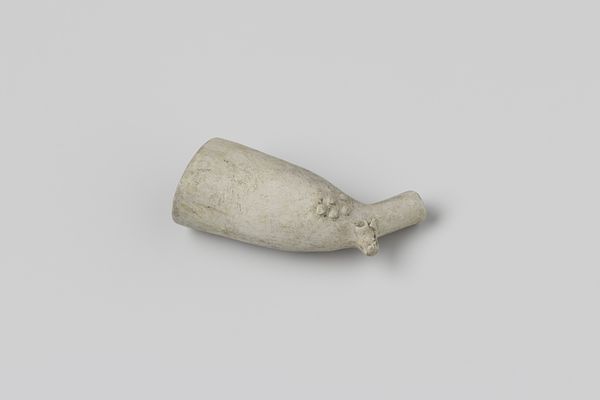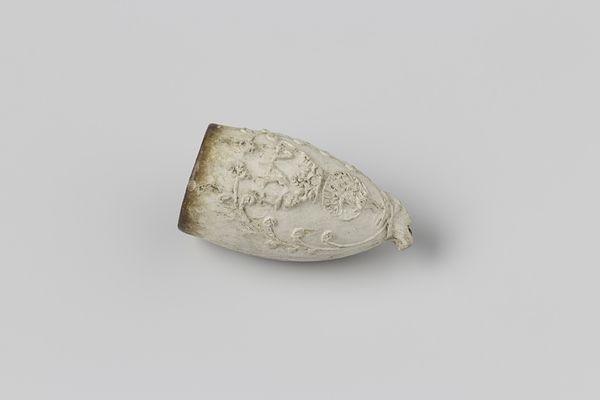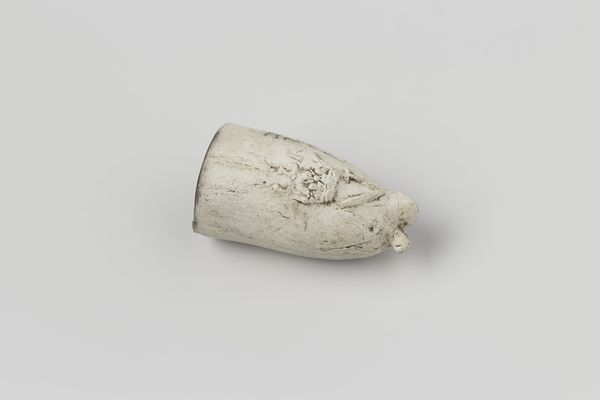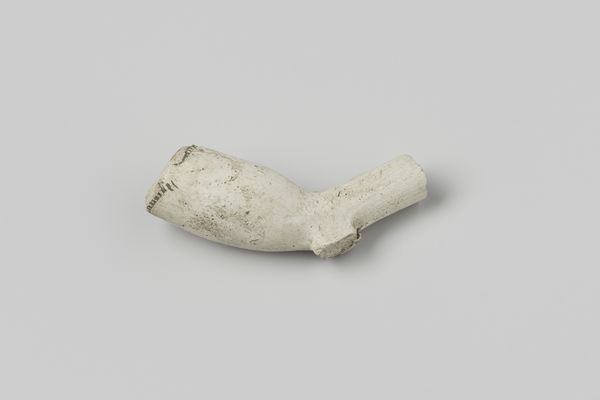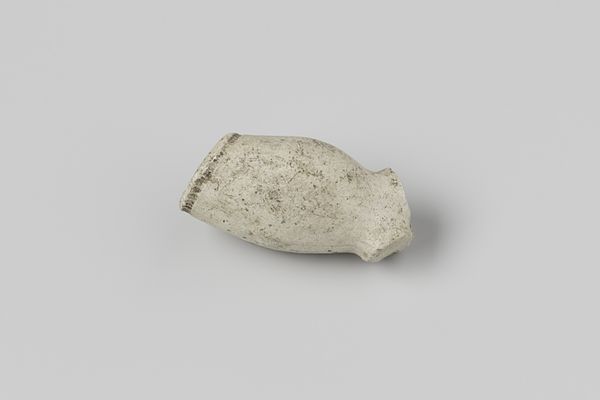
ceramic, earthenware
#
baroque
#
ceramic
#
earthenware
#
decorative-art
Dimensions: length 4.4 cm, width 2.2 cm
Copyright: Rijks Museum: Open Domain
Editor: So, this is a fragment of a pipe bowl, made of earthenware by Jan Nieuwveld sometime between 1740 and 1780. It's clearly broken, and it's presented kind of starkly. What do you see in this object? Curator: I see a connection to daily life, transformed by the artist's labour and then subjected to the wear and tear of material existence, its ultimate disposal as garbage. Nieuwveld took simple clay and transformed it into something that held social value – consider what this bowl was used for, who smoked from it, and in what social context. Is the material refined or coarse, mass produced or bespoke? Editor: That makes me think about it differently. The Baroque decoration looks quite elaborate for something that’s ultimately going to be burned. Is there a tension between its function and its form? Curator: Exactly. The baroque style is interesting, and it begs the question: what does baroque, usually associated with elite display, signify in the context of a tobacco pipe used in more quotidian settings? How was labour divided in its production, the designer versus the artisan? Who profited from its use? Editor: I see, the decoration might elevate it, making the experience of using it—or just owning it—more special. Curator: Perhaps, or it could be simply emulating wealth or status that might otherwise be unattainable to the average smoker. Consumption can be very telling about material relationships to value. It could signify all sorts of tensions related to class and aspirations. Does this perspective change how you interpret other decorative arts? Editor: Absolutely. I’m definitely going to think about the people who made and used these things, and how their social world shaped those objects, next time. Curator: Precisely! Considering objects within the frame of production and consumption sheds light on hidden labour relations, and can shift traditional notions of "fine art" towards considerations of value embedded within ordinary things.
Comments
No comments
Be the first to comment and join the conversation on the ultimate creative platform.
